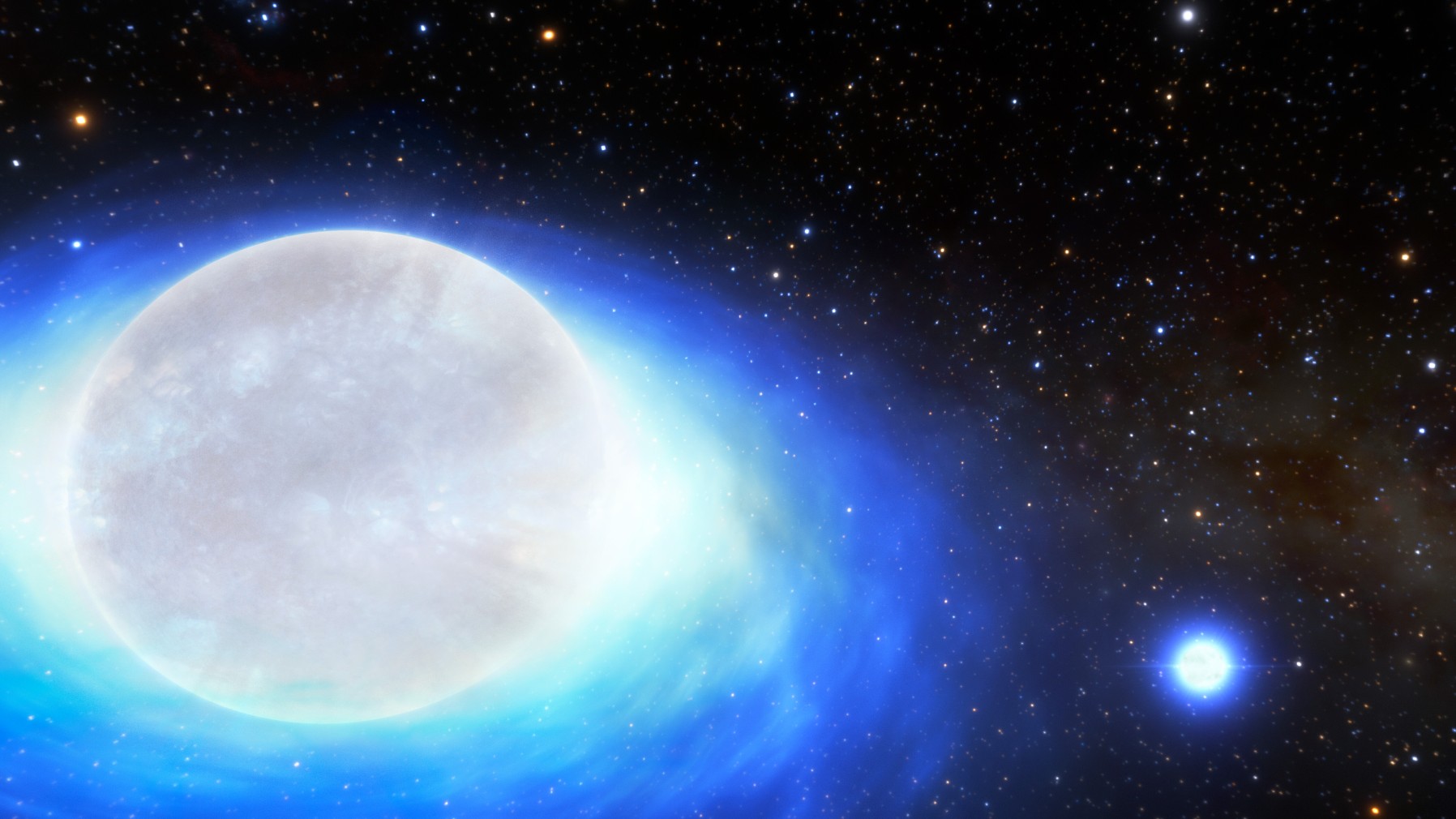'1-in-10-billion' star system is doomed to explode in a fiery kilonova
Scientists have discovered an extremely rare star system that is doomed to explode in a 'kilonova' caused by the merger of two neutron stars.

For the first time, scientists have discovered a double-star system that is doomed to explode in a fiery "kilonova," a precious-metal-creating blast caused by the merger of two stellar corpses.
The kilonova — which will send gold, silver, platinum and other new heavy elements careening into space — won't happen for millions of years. But the precursor system that is set up for this massive merger is a rare sight nonetheless, consisting of one massive star and a dense, dead neutron star locked in a shared orbit. Astronomers estimate that there are fewer than 10 such systems in our galaxy.
"We know that the Milky Way contains at least 100 billion stars and likely hundreds of billions more," André-Nicolas Chené, an astronomer at the National Science Foundation's NOIRLab, said in a statement. "This remarkable binary system is essentially a one-in-ten-billion system. Prior to our study, the estimate was that only one or two such systems should exist in a spiral galaxy like the Milky Way."
Kilonovas are huge flashes of electromagnetic radiation released during the merger of either two neutron stars — the collapsed cores of massive stars that ran out of fuel — or a neutron star and a black hole.
Chené and his colleagues used the SMARTS 1.5-meter Telescope at the Cerro Tololo Inter-American Observatory in Chile to discover the star system CPD-29 2176, located about 11,400 light-years from Earth. The team deduced that the binary star system contained a small, dense neutron star being orbited by a massive companion star that will likely collapse into a neutron star, itself, in the distant future.
Massive stars sometimes explode in dramatic supernovas, but the neutron star in this system was apparently left behind by a special class of supernova known as a stripped-down supernova, the researchers said. In this case, the once-mighty star lost much of its outer mass to its orbital partner before reaching the end of its life. Thus, when the star ran out of fuel and collapsed, it did so quietly and gently, without a massive explosion that would have kicked its partner out of orbit, as is often the case in binary systems.
Sign up for the Live Science daily newsletter now
Get the world’s most fascinating discoveries delivered straight to your inbox.
The orbiting massive star is now in the process of losing its own fuel to the void of space and will likely become a stripped-down supernova itself. Once that happens, it will leave two neutron stars orbiting each other tightly. They'll eventually collide and merge, sending out a flashy kilonova as they die. The researchers reported their findings Feb. 1 in the journal Nature.
According to CNN, this cosmic swan dive may take as long as a billion years to develop. However, scientists are excited to study the precursor to a probable kilonova before the explosion occurs.
"This system reveals that some neutron stars are formed with only a small supernova kick," study lead author Noel D. Richardson, an assistant professor of physics and astronomy at Embry-Riddle Aeronautical University in Florida, said in the statement. "As we understand the growing population of systems like CPD-29 2176, we will gain insight into how calm some stellar deaths may be and if these stars can die without traditional supernovae."

Stephanie Pappas is a contributing writer for Live Science, covering topics ranging from geoscience to archaeology to the human brain and behavior. She was previously a senior writer for Live Science but is now a freelancer based in Denver, Colorado, and regularly contributes to Scientific American and The Monitor, the monthly magazine of the American Psychological Association. Stephanie received a bachelor's degree in psychology from the University of South Carolina and a graduate certificate in science communication from the University of California, Santa Cruz.










